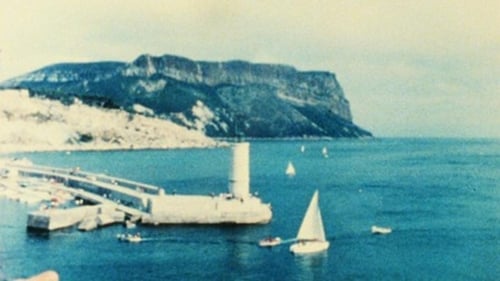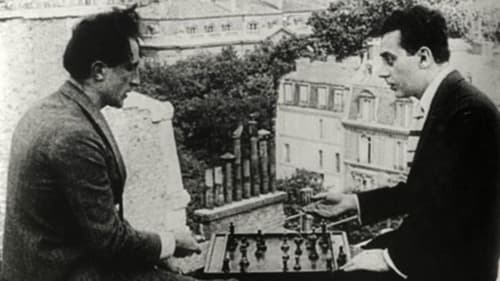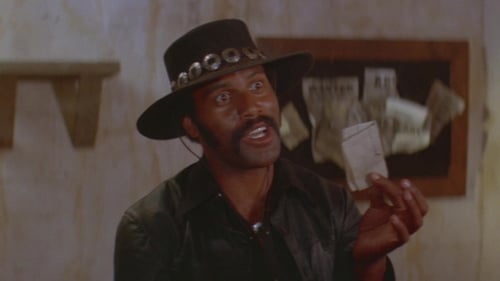Swamp (1969)
Gênero :
Runtime : 6M
Director : Robert Smithson, Nancy Holt
Sinopse
The action of the film is direct: Holt walks through the tall grasses of a swamp while filming with her Bolex camera, guided only by what she can see through the camera lens and by Smithson's verbal instructions. The viewer experiences the walk from Holt's point of view, seeing through her camera lens and hearing Smithson's spoken directions. Vision is obstructed and perception distorted as they stumble through the swamp grasses.

Em um pequeno porto no sul da França, um farol ao mar é fotografado quadro a quadro durante um dia todo, do nascer ao pôr do sol. Embalada pelo barulho das ondas e do vento incessante, a mesma série de fotos é repetida três vezes.

Curta-metragem surrealista do cineasta francês René Clair

Jack trabalha com seu carro esporte e sonha voar. Sua vizinha Mary está apaixonada por ele, mas ele não parece estar interessado nela. Jack está aos encantos de Sylvia, mas não tem chances com ela porque Sylvia só tem olhos para David. Quando a guerra começa a ecoar, Jack e David são treinados para serem pilotos. Sua rivalidade logo se transforma em amizade, ao longo que eles lutam contra os alemães no céu da França. Mary se alista no esquadrão feminino para tentar ficar mais próxima de Jack. Primeiro vencedor do Oscar de Melhor Filme da história.

Um antigo ícone do cinema de faroeste passa a maioria do seu tempo fumando ou cedendo sua voz para dublar comerciais de cigarro. Quando ele é atingido por algumas notícias que mudam a sua vida, ele decide reprisar o seu célebre papel em um novo filme chamado "The Hero" e se reconectar com a sua ex-esposa e filha

"...Nekes retreats behind his film. What is left is a double portrait, in which neither Dore 0. nor the grand landscape remain unchanged. The cold of the icy coastline - long shots of stones, snow and the sea - dwindles away before the image of Dore 0. Solitude is superflous, when the grandiose mountain meadow invites somersaults. ... In this case Nekes handles what he shows considerately. He releases the objects he portrays. He allows them to unfold. And so model and patterns actually serve another purpose: to let poetry grow, and energy and beauty and confidence nell'abbandono." (Dietrich Kuhlbrodt, Filmkritik, 9/1971).

A part of Werner Nekes' lyrical anthology DIWAN.

Diwan, a lyric anthology, an outdoor movie with people. With people living in the surrounding precious and very beautifully photographed nature, are neither more nor less than one part of it. What Nekes manages there with landscape, as a cunning and quote many fine artist in a medium that runs in time, as he defeated the time changed, by themselves for change of scenery uses, as it interferes with the laws of chronology through the rewind ability of the camera or destroyed, which is a compelling and highly aesthetic experimental company.

An attempt to transform a Roman Western into a Greek tragedy.

“The changing dots, ectoplasmic shapes and electronic music of L. Schwartz’s ‘Mutations’ which has been shot with the aid of computers and lasers, makes for an eye-catching view of the potentials of the new techniques.” – A. H. Weiler, N. Y. Times

Based on chilling real life events, this story charts one couple's terrifying real life encounter with the dark forces of the supernatural. In 1930, Reverend Lionel Foyster and his wife Marianne move into the Borley Rectory when Reverend Foyster is named rector of the parish. The couple's peaceful existence is soon shattered by a series of unexplained occurrences which quickly escalate into a heart stopping nightmare. Now Reverend Foyster and Marianne must discover the deadly secrets of the Rectory to avoid becoming another tragic footnote in the dark history of The Most Haunted House In England.

"His films are like a roller-coaster. His way of throwing the act of seeing into utter confusion is an attack on the eyes in their corporeal function, and to attack the eyes is to take on tile body itself as your opponent. The film makes you break out in sweat only by shooting a safe, peaceful gymnasium in the dark." - Koharu Kisaragi

Film in Which There Appear... is a six-minute loop of the double-printed image of a "China girl" or "Shirley card", her image off-center, making visible the sprocket holes and edge lettering on the film. According to Land, within the loop, "no development in the dramatic or musical sense" occurs. Fred Camper described Film in Which There Appear... as "a kind of Duchampian found object, a [...] film that focuses attention on the medium and the viewer."

Duras narrates a short story while the camera travels through the streets of Paris with short interludes of solemn music.

David Lynch constrói uma luminária enquanto explica os métodos usados.

Two black bounty hunters ride into a small town out West in pursuit of an outlaw. They discover that the town has no sheriff, and soon take over that position, much against the will of the mostly white townsfolk.

Em 2021, metade da população do mundo sofre de uma doença fatal chamada "NAS". Johnny, um mensageiro cibernético, é contratado para carregar o chip com os dados da cura dentro do cérebro até Newark, sendo perseguido por empresários gananciosos.

Viola's seminal piece, The Reflecting Pool, was made three decades ago on analogue video tape and yet could easily pass for a contemporary digital piece; in it, Viola emerges as central protagonist from a thick forest into a clearing filled by an artificial pool. As the noise of an aeroplane slowly passes and fades overhead, Viola approaches the edge of the pool, whereby he removes his shoes, squats down yelling and then prepares to make a powerful jump.

A compilation of over 30 years of private home movie footage shot by Lithuanian-American avant-garde director Jonas Mekas, assembled by Mekas "purely by chance", without concern for chronological order.

Uma documentarista e um repórter viajam para Hong Kong para o primeiro de muitos encontros com Edward Snowden.

Ivan Ladislav hides a true chamber of wonders behind the clear, mathematically abstract structure of his films and videos, meticulously compiled rhythmically frame for frame, each work likewise presenting an analysis of the film medium. Concealed therein, culled from deep in the medium’s prehistory, are hermetic parallel universes in whose number ranges and symbolic spaces, Galeta’s precisely constructed film compositions find a formalist anchor.












